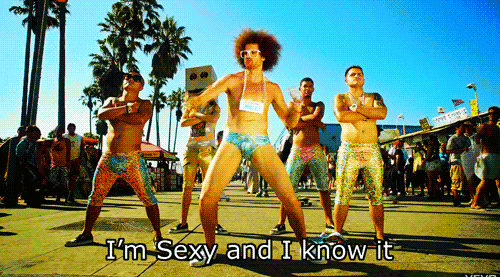Matador Network's Blog, page 2276
April 26, 2014
What it's like to run 135 miles
Josh Spector is an LA-based endurance runner, and last January he ran 135 miles in one go in Brazil. The entire feat took him 32 hours, 40 minutes, and 20 seconds, which is a solid 32 hours, 30 minutes, and 20 seconds longer than I’ve ever run at a single stretch. It’s not something I want to do myself, but luckily for me and all the other non-endurance runners out there, we live in a world where GoPro cameras exist. Josh ran with a GoPro for long portions of the race, and the result is incredible.
You can read his full account of the race on his blog. Congratulations to Josh and anyone else who can run at this length — you truly have my respect. From here on out, if you see a “26.2″ bumper sticker (denoting that the driver has completed a marathon), you’re one of the few people allowed to think, “Pssh. What a wuss.” 
The post Here’s what it’s like to run 135 miles appeared first on Matador Network.

10 useful Mandarin Chinese phrases

Photo: Kevin Dooley
From giving a compliment to refusing that extra helping of food, Jocelyn Eikenburg supplies 10 practical Mandarin phrases.
YOU’RE JUST AS LIKELY to hear “Ni Hao” as “Hello” in my home. After living in China for five and a half years, I returned to the US with a Chinese husband, the fluency to be a freelance Chinese translator, and a heaping rice bowl of expressions in Mandarin.
If you’re traveling to China, I recommend learning these 10 extraordinarily useful phrases.
1. Nǐ zhēn niú!
“You’re outstanding!”
In China, you can actually compare someone to a cow (niú) to compliment his outstanding character. Yao Ming is definitely niú, and so is anyone who scores you train tickets after they’re “sold out” or tries the baijiu liquor sold in plastic squeeze bottles in grocery stores.
2. Yìqǐ chīfàn, wǒ qǐngkè.
“Let’s go out to eat, my treat.”
In China, eating together is how people build and maintain good relationships. So if you want to make a new friend, ask a favor, or thank someone, do it as the Chinese do — over a lunch or dinner on your Chinese yuan.
3. Méi bànfǎ, rén tàiduō.
“There’s nothing you can do, too many people.”
In a country of 1.3 billion people, it only takes a small percentage of them to wreck your trip. When my Chinese husband and I traveled to Beijing during the national holiday in October, we spent half the day slogging through a mob that stretched across Tian’anmen Square just to get into the Forbidden City. I’ve also had to stand on crowded trains because I couldn’t get a seat and, while living in Shanghai, experienced my share of being sandwiched between anonymous butts and groins on rush-hour subway cars.
4. Nǎlǐ, nǎlǐ!
“Not me!” (lit. “where, where!” — for deflecting compliments)
Confucian values — such as modesty — still run strong in China, so people don’t say “thank you” when praised about anything. The Chinese, however, assume foreigners like you do the opposite. This phrase is guaranteed to surprise your new Chinese friends and get a good smile out of them.
5. Yǒu yuán qiānlǐ lái xiānghuì.
“We have the destiny to meet across a thousand miles.”
Chinese people believe love and destiny go hand in hand — which is why my Chinese husband loves describing our relationship with this phrase. It’s best for romantic situations, and could even be a poetic pickup line.
6. Wā! Zhōngguó de biànhuà hǎo dà! Zhēnshì fāntiān fùdì!
“Whoa! China is changing so much! It’s as if heaven and earth changed places!”
Shanghai’s Pudong District, with a skyline straight out of a science-fiction flick, was rural farmland before the 1990s. Until the 1980s, the high-rise miracle of Shenzhen was just another tiny village on the South China Sea known for fresh fish and oysters.
Every year, China races to build more bridges, buildings, high-speed train lines, and subway routes, changing the landscape faster than a speeding Beijing taxi driver. This expression is great for repeat visitors to China and anyone blown away by the pace of development.
7. Zhēnde! Wǒ yìdiǎn dōu búkèqile!
“Really! I’m not being polite at all!”
Perfect for when people keep piling kung pao chicken into your bowl long after you’re full, or pouring you glass after drunken glass of baijiu — and think you’re just saying “búyào” (“I don’t want it”) to be polite. Once, when a Chinese friend insisted I drink another round of Tsingdao, I had to repeat this phrase over and over while shielding my glass from his swinging beer bottle. Be ready to battle for your stomach and sobriety.
8. Fēi xià kǔgōngfū bùkě.
“It requires painstaking efforts.”
Some 5,000 tumultuous years of history have taught the Chinese that nothing comes easy. People usually say this when faced with any challenge, such as taking the national college entrance exams or pounding the pavement for a job. It’s useful for climbing China’s mountains, squeezing into crowded transport, or walking into one of the noxious bathrooms at the train stations.
9. Bùhǎoyìsi, yǒushì. Yàozǒule.
“I’m sorry, I have something to do. I must go.”
Chinese people prefer to be vague about the details — which means you never have to explain why you need to leave right now. It’s ideal for uncomfortable situations of any kind. Add another “bùhǎoyìsi” at the end if you feel a little guilty for bolting.
10. Wēiwēi zhōnghuá, yuányuán liú cháng!
“China is awesome [in size], and has a long history!”
Show your love for the Middle Kingdom by praising two things that make the Chinese extra proud: their large country and nearly 5,000 years of history. Shout out this expression on the summit of Huangshan, from a watchtower on the Great Wall, or overlooking that grand vault of Terracotta Warriors. 
This post was originally published on April 21, 2011.
The post 10 extraordinarily useful Mandarin Chinese phrases appeared first on Matador Network.

April 25, 2014
Skin color doesn't equal connection

Photo: Retlaw Snellac
Whether the Caribbean, Latin America, or Africa, traveling to a predominately black location can be difficult as a black traveler. The cultural and historical diversity within the African diaspora has created uniquely connected yet disconnected cultures, traditions, and identities. As a black traveler in countries with an African presence, your skin color, race, identity, and racial authenticity are constantly being shaped, challenged, and broadened.
I have always been black. Blackness has been ingrained in me since I was a youngster in Chicago, and it is very much so a part of my identity. However, my blackness was constantly challenged this past semester when I had the opportunity to study abroad and live with host families in a variety of communities in South Africa. As a black woman in Cape Town, South Africa, given their racial theories and categories, my race, ethnicity, and heritage were confronted on a daily basis.
Black Americans are a diverse community that have a variety of skin tones and hair textures, but because of this diversity we can occupy a complex position in South Africa. My identity oscillated between black and coloured, a racial group in South Africa that denotes black, European, and Asian ancestry. Many times, it was through my voice rather than my appearance that people realized I wasn’t from there. Unlike members of my cohort, I had a privilege of ambiguity, where onlookers questioned my identity.
Until I opened my mouth and South Africans realized I was American, the ways in which I was perceived and classified solely based on phenotypical characteristics impacted the ways in which people responded to me and uniquely shaped my overall experience. I recall a particular day when my friend CJ (who happens to be white) and I got on a taxi in Langa, a black township right outside of Cape Town. The driver turned around and began to speak Xhosa to me. Even after I told him I only spoke English, he continued to speak in Xhosa. After a minute of talking in Xhosa and me responding in only English, he finally spoke to me in English and told me I should accept my blackness and not conform. Clearly, he did not hear my American accent, but he consistently wanted to push his conceived identity on me despite my own as a black American.
When I lived in Langa, my host-family accepted me as a black person in their community. When I arrived, I wore my hair in either a big afro or braided. My Langa mother’s friend even told me “I could be a part of the family.” They knew I was an American, but I was able to physically blend with them and the people in the neighborhood.
There have been countless accounts of black Americans returning to the “motherland” and not being accepted as they thought they would be.
Interestingly enough, when I moved to the Cape Malay “coloured” community I was again accepted, but now as a part of the coloured community. In Bo Kaap, a Cape Malay coloured neighborhood, I was blatantly told (mind you, by someone who was darker then me) that I should stop saying I was black, and in South Africa I was coloured. To them, they believed saying I was black was denigrating — one of the worst insults. Their perceptions were obviously influenced by the history of the place, but it was also reflective of the different perspectives of blackness around the world. I was able to oscillate at any point from being black to being coloured to being who knows what else. These experiences highlighted the fact that there is no clear boundary or definition of who is considered black or coloured.
While this is my experience, all of the black American experiences cannot be summarized within a tightly constructed paragraph. The ways in which blackness is understood abroad is unique. Yet, each person’s experience is informed by a multitude of factors. The complexity and plurality of the black American experience abroad provides a narrative of the complex intertwining of race, class, and nationality. There have been countless accounts of black Americans returning to the “motherland” and not being accepted as they thought they would be. It;s a mind-f*ck to say the least when you visit nations of the African Diaspora and people look exactly like you, but there is little if any acknowledgement of similar roots and culture.
Saidiya Hartman says it best as she recounts her sojourn to Ghana, “Old and new worlds stamped my face, a blend of peoples and nations and masters and slaves long forgotten…[but] A black face didn’t make me kin.” A golden thread connects people of the African diaspora — we have flourished independently and our cultures have been nurtured by the various influences, environment, and desires of that distinct diasporic group. The complex interplay of skin color, nationality, and class all emerge through the black American’s experience in countries with a black presence. It is up to you as a global trekker to open your critical lens and be aware of the possible impacts your skin color and nationality has on your experience.
To the black traveler: Don’t expect to be welcomed with open arms, and understand blackness is not necessarily transferable. 
This article originally appeared on Travel Noire and is reprinted here with permission.
The post Shared skin color doesn’t equal connection appeared first on Matador Network.

How to attract the opposite sex
The standards by which you and your culture judge physical attractiveness are insanely subjective, but you probably haven’t been thinking of them that way. That’s the message of Hank Green, of the excellent YouTube channel vlogbrothers. In this video, Hank’s ragging on the ridiculousness of other YouTube videos that tell girls how to be attractive to men — the problem being that everyone likes different things, especially when you cross cultural lines. And while there might be certain features or attributes in a girl or guy that the average person is attracted to within a culture, that certainly doesn’t mean every person is attracted to the average.
Recently, a number of news sources covered a new report suggesting that we’ve hit “peak beard” — that there are so many beards out there on the dating market that women are going to find them less interesting and less attractive than they would at a time when beards were a novelty. As a bearded man (with no intent to shave), I hope this isn’t true. But Professor Rob Brooks, the author of the beard study, made an excellent point during an interview with the BBC, and it’s a point that should be made every time we’re talking about something as broad as what “most” people find sexually attractive.
“Luckily,” he said, “in real life, we never mate with an average. We mate with an individual.” So don’t try and conform yourself to an average. Be an individual. 
The post This should be the last video ever on how to attract a member of the opposite sex appeared first on Matador Network.

19 experiences every WWOOFer has
2. When you first meet the other WWOOFers you’re working with
3. When you start your first day on the job
4. When you finish your first day on the job and emerge from the experience exhausted and covered in scratches, animal dung, and a thick layer of sweat
5. After day five of weeding
6. When you uncover the first gigantic insect in your bed
7. When it’s finally Saturday night and you have Sunday off
8. What actually ends up happening
9. When you think you’re getting into excellent shape at long last
10. What really happens after a long day of work
11. When you really, really, really just want a beer and the nearest town is 50 minutes away on foot
12. When you finally get that drink
13. When you have a breakthrough moment with your WWOOF hosts
14. And then you realize the hand gestures you’ve been using are actually horribly offensive in their culture
15. When your WWOOF hosts have people over for dinner and you’re invited, but you don’t understand a word of the language
16. When it’s time to leave and suddenly every insect is tolerable, and you’re sure you’ll never experience such peace and oneness with nature ever again in your lifetime
17. When you first lay eyes on civilization again
18. Three weeks later, when your body still hasn’t properly adjusted to the real world
19. Four weeks later, when you’re already sick of civilization and the real world again
The post 19 experiences every WWOOFer has appeared first on Matador Network.

Skiing the northern mtns of Norway
When arctic explorer Doug Stoup asked me to join his expedition to Svalbard, Norway, to ski on the planet’s northernmost mountain range, I figured it would be more of a novelty. What I didn’t realize was the terrain and snow conditions would be world class.
Our journey began in Longyearbyen (population 2,000), roughly 800km from the North Pole, a whaling community turned coal mining town that currently features one grocery store, a couple of overpriced hotels, and a scattering of bright colored buildings. With less than 60km of roadway, the best (and virtually only) way to get around is by snowmobile. So our team of seven loaded up a small fleet of snowmobiles, along with towing sleds carrying all of the necessary gear and supplies to survive and ski for two weeks. Leaving fuel caches along the way, it took 12 hours to reach our final destination, the Atomfjella Glacier, containing the highest mountains on the island.
The following is a collection of photographs I captured while on the remote glacier for those two weeks. After the adventure was over, I had no hesitation in saying there is absolutely no better place to ski in the world than Svalbard during the month of May. 

1
Longyearbyen home base
Longyearbyen, the world's northernmost town, acted as home base. We spent two days here preparing for our excursion north to the Atomfjella Glacier.

2
12-hour snowmobile
The first minutes of our 12 hours spent on sleds. The route north lead us past three calving glaciers spilling into the frozen ocean. With 24 hours of daylight, we had plenty of time to take in all the sights.

3
Cozy basecamp
Things were cozy at basecamp. Right outside the doorstep was some of the best couloir skiing I have ever seen. It was May but temps were still cold this far north and the snow was powder on all aspects. At this point our stoke was reaching epic proportion.
Intermission
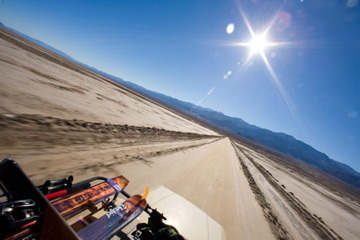
Skiing Death Valley: Outtakes from the Men’s Journal Expedition

Powder days on the Gaspé Peninsula, Quebec [pics]

20 pics to make you wish you were heli-skiing Alaska

4
Rabbit Ears couloir
Reggie Crist and Doug Stoup hiking up what we later named Rabbit Ears. This couloir was easily 3,000 vertical feet and drained directly into camp.

5
Ski all day, all night
Reggie Crist skiing late evening...or was it early morning? With the sun never setting time became irrelevant, as depicted in this photo. Is 4:30am sunrise or sunset? Basecamp is barely visible in the upper right of the photo.

6
Never-ending sunsets
Sunsets stretched on for hours. Here, Lexi Dupont took advantage.

7
Morning commute
Surrounded by epic lines and fresh snow, the morning commute from basecamp couldn't have been more rewarding.

8
The Noorderlicht
During the summer months, the Noorderlicht sails tourists around the northern fjords of Svalbard. When the winter months roll around it becomes dormant, frozen in ice while the dogs come out to play.

9
Frozen ocean
Reggie Crist, Lexi Dupont, and Doug Stoup glide along over the frozen ocean, dwarfed by the timeless beauty of this land.
Intermission

Powder for Powder, ep. 5: Heli-skiing Haines, Alaska

Powder for Powder, ep. 2: ALCAN adventure

Bringing in the New Year at Great Canadian Heli Skiing

10
Aqua pura
Melting glaciers and pressures from within create the purest water fountain on Earth. Lexi Dupont bows to Mother Nature for a taste of Svalbard.

11
Local inhabitants
After giving birth and spending three months in her den caring for her cubs, a mother polar bear searches for nourishment.

12
Goodbye!
A polar bear cubs waves goodbye as we depart Svalbard.
The post Skiing the northernmost mountains in the world: Svalbard, Norway appeared first on Matador Network.

The 20 wildest festivals on Earth
If you find yourself bored with good old house party bong sessions, how about mass-scale paint wars with hundreds if not thousands of people out of their minds on marijuana-laced beverages?
From over-the-top mud wrestling to galactic electronic music gatherings, here are 20 all-time parties and festivals you should make it to at least once in your lifetime. 

1
Holi
Holi is an ancient Hindu festival that takes place around March in India and Nepal. Participants down mad amounts of bhang, a cannabis beverage, and then go nuts in the streets with epic "battles" of colored powder and water.
(via)

2
Boryeong Mud Festival
Originally conceived as a marketing effort for mud cosmetics in Boryeong, South Korea, the two-week festival is a major stop on the 'independent travelers looking to get fucked up' trail. The most popular days of the festival typically fall on the second weekend of July.
(via)

3
Electric Daisy Carnival
Electric Daisy Carnival in Las Vegas recently drew 345,000 people overdosing on bass drops and pool parties over three days in June.
(via)
Intermission

8 ways to celebrate summer in Copenhagen
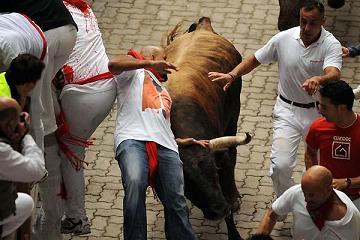
Planning for the Pamplona bull run

How people party in Los Angeles (and why you can’t hang)

4
Tomorrowland
Tomorrowland takes place the last weekend of July in Boom, Belgium. Over 180,000 people who don't want to have hearing when they're older hit the scene to hear hundreds of DJs perform.
(via)

5
Ultra Music Festival
Held in Miami, Ultra Music Festival attracts over 330,000 partiers looking to combine warm weather and electronic dance music. In 2013, pre-sale tickets sold out in a matter of seconds.
(via)

6
La Tomatina
Every August, La Tomatina takes place in the Valencian town of Buñol, where 40 metric tons of tomatoes are thrown in a massive food-fight, giving 20,000 revelers their daily dose of vegetables.
(via, via, via, via

7
Roskilde
Roskilde, one of Europe's largest festivals, attracts artists ranging from synthpop to hip-hop. Held in June or July each year, the festival attracts over 100,000 people and includes a naked run for those who feel wearing clothing is too mainstream.
(via)

8
Songkran
During Songkran, Thailand's traditional New Year's Day from April 13-15, participants “attack” each other with water thrown from buckets, shot from water guns, and sprayed from hoses. Even the elephants join the battle.
(via)

9
Distortion
Copenhagen's Distortion pops up in random locations all over the city during the week of the first Saturday in June. From boat parties to block parties, thousands party around Copenhagen for five days in five different locations.
(via, via, via)
Intermission

Quebec City Festival: Starts tomorrow!

Matador’s 6 most overrated New Year’s Eve celebrations

6 tips for safe moshing in dangerous places

10
Queen's Day
On April 27, Amsterdam is colored orange as people celebrate from the streets to the canals. Over a million revelers party all day and night, closing the city centre to cars and trams.
(via)

11
Full Moon Party
An all-night beach party on Ko Pha Ngan in Thailand, the Full Moon Party takes place around every full moon. Fire-skipping ropes, drugs, and alcohol buckets abound—the event is a stop for every traveler trying to wake up the next day with no memory of the night before.
(via, via, via)

12
Rock in Rio
Originally held in Brazil, Rock in Rio now moves from city to city (2014's festival will be held in Lisbon). With the last event attracting over 700,000 people, there's no shortage of eclectic music, drinking, and dancing.
(via)
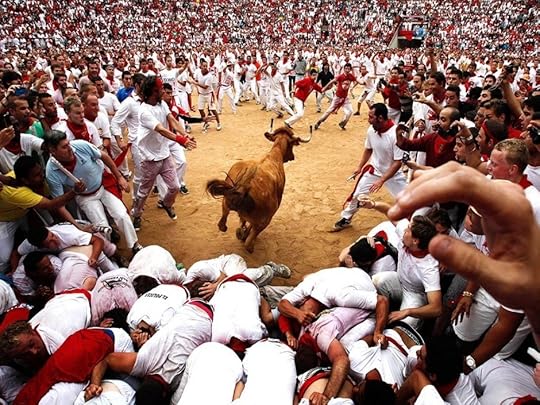
13
San Fermin Festival
Over a million people invade Pamplona, Spain to participate in the festival of San Fermin. Those brave enough (and willing to get a potential horn to the chest) participate in the running of the bulls during this event.
(via)
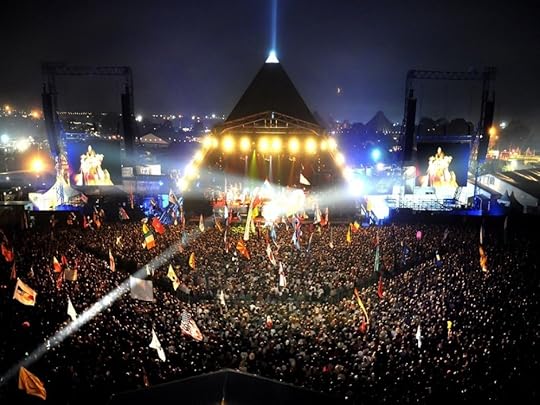
14
Glastonbury
A five-day music festival held near Pilton, Somerset, England on the last weekend of June, Glastonbury is one of the world's largest. Secret shows have been played by Radiohead and Skrillex for those in the know.
(via)

15
Battle of the Oranges
The Battle of the Oranges is a festival held in the Italian city of Ivrea. “Teams” beam each other with oranges in the largest food fight in Italy. Spectators are urged to wear red hats, unless they're really craving high-velocity oranges to the teeth.
(via)
Intermission

Win a Sansa slotRadio Player for the love of music and the love of travel

The best places to catch live music in New Orleans

18 amazing glass floor experiences [pics]
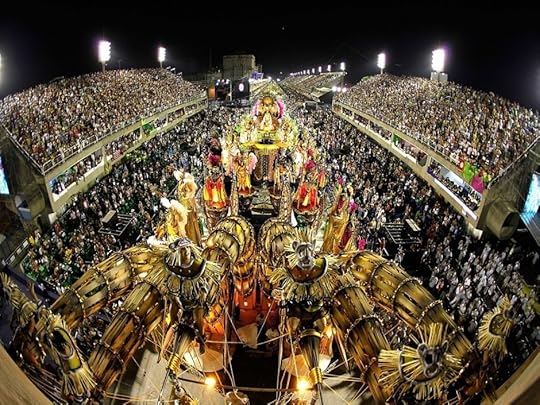
16
Rio Carnaval
The Carnaval in Rio de Janeiro, the largest carnival in the world, takes place yearly before Lent. Two million people swell the streets of Rio daily during the festival, drinking and sambaing their way through the city.
(via)

17
Coachella
With 2013's iteration becoming the highest-grossing festival ever, Coachella brings hundreds of thousands to Southern California's interior to party in the desert sun and watch a Tupac hologram perform every once in a while.
(via)

18
Burning Man
In late August, Black Rock Desert in Nevada is transformed into an experimental community of self-expression, where burners set up camp and forget about sleep for the next week before burning down the Man at the center of Black Rock City.
(via)
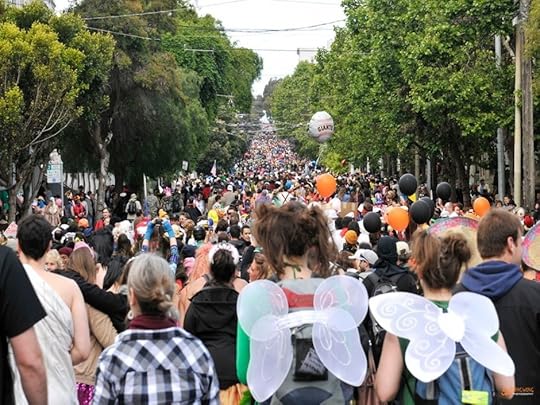
19
Bay to Breakers
Originally a footrace meant to raise San Francisco's spirits after the 1906 earthquake, Bay to Breakers has become a “race” of over 100,000 costumed participants. Alcohol, nudity, and drugs abound, it's the largest mobile party of its kind.
(via)

20
Oktoberfest
Every September, over 6 million people head to Munich for the 16-day event known as Oktoberfest. Women wearing traditional Bavarian dresses serve large beers to patrons looking to stumble back to their beds.
(via, via, via)
The post 20 of the world’s biggest music festivals and mega-parties to experience before you die appeared first on Matador Network.

April 24, 2014
Why the 7 Wonders of the World suck
So I’ve had this conversation a few times:
It’s weird how the Seven Wonders of the World list is so extraordinarily well known, yet somehow nobody knows what it really means. They all seem to think it’s some objectively compiled list of glorious buildings, as though there’s a Seven Wonders Police that evaluates the list every year and keeps it updated with only the bestest things ever.
In reality, it’s absolutely nothing of the sort, and has no basis whatsoever in sensible art appreciation. In fact it’s one of the dumbest ways of evaluating the worth of architectural marvels that draw legions of awestruck visitors each and every year.
Let’s dive into the rabbit hole, shall we?
What counts as a Wonder of the World?
Here’s where it gets tricky. People tend to think the only qualification is awesomeness, but that’s not even close. The Seven Wonders of the Ancient World has very little to do with how wonderful things are.
What the hell are they, you ask? Well, to find out, we have to go way back to the beginning. Of civilization.
Thousands of years ago, back when the Greeks were busy inventing democracy and taking naked baths together, a few of them ventured out into the world, discovering works of magnificent art, from pyramids to lighthouses to gardens. Yes, gardens. And they wrote about them. And compiled them into lists of their favorite seven.
That’s right, kids. The Seven Wonders of the Ancient World was nothing more than an Ancient Greek bucket list.
There was no “correct” list of Seven Wonders, just as today there’s no “correct” list of favorite places. Everyone has their own. But many of the entries matched up with each other, because, well, the world was barely civilized back then. If something amazing was out there, chances were it’d show up on everybody’s list.
And as history went on, a few of the more famous lists, such as those from Antipater and Philo, and secondhand references to a much earlier list by Herodotus, came to be seen as the important ones. So although everyone had their own, the world did indeed settle on a single, official answer. Behold:
The Seven Wonders of the Ancient World
In order of construction:
Great Pyramid of Giza
Hanging Gardens of Babylon
Tempe of Artemis at Ephesus
Statue of Zeus at Olympia
Mausoleum at Halicarnassus
Colossus of Rhodes
Lighthouse of Alexandria

In display order (not chronological): Great Pyramid, Hanging Gardens, Temple of Artemis, Statue of Zeus, Mausoleum at Halicarnassus, Colossus of Rhodes, Lighthouse of Alexandria. The painting is by Maarten van Heemskerck, a 16th century Dutch painter.
The Lighthouse only just barely made the list. For a long time, the Ishtar Gate of Babylon was #7.
You may have noticed you haven’t seen many of these showing up as National Geographic cover photos lately. That’s because most of them are gone. Sadly, the only one remaining is the Great Pyramid of Giza. Pyramids can’t fall down.
Notice anything else weird about the list? Yeah. Let’s discuss.
“Why isn’t _______ a Wonder of the World?”
You’ve probably heard it before. “Why not the Taj Mahal? Or Tikal? Or Stonehenge? Or the Great Wall? Or Angkor Wat? Or anything awesome?!?!!?”
Most people seem to get annoyed when they hear the Eiffel Tower isn’t one of the Seven Wonders. Or the Dome of the Rock, or Machu Picchu, or whatever. They’re wondrous, right? They’re in the world, right?!?! So why aren’t they Wonders of the World?!?!
Remember that list above? Well, it was developed from around 500 BC to about 0 AD. By Greeks, traveling around…Greece, basically.
So not only does the list include only things built before that time, but it also includes only things built within that area. That’s as far as they could explore without cars and stuff. So it should really be called the Seven Wonders of Ancient Greece and Nearby Environs.
Doesn’t sound so cool now, does it?
Now, to be fair, what was going on in Ancient Greece and Mesopotamia was pretty great. Chances are that if they had done a real Wonders of the World list, and traveled all over the globe to find the absolute best, it would look pretty much the same. Except they might have added the Great Wall, which existed during that time.
But as time goes on, it makes less and less sense to view the Seven Wonders as a “best-of” list. It’s just a neat historical document of something that happened in Ancient Greece, not a list of the world’s most wonderful things. For the most part, they literally don’t even exist anymore.
Which is why so many cool buildings don’t count. No building you’ve ever seen, except the Pyramid, is a Wonder of the World. So if anyone ever asks, “Is this a Wonder of the World?” The answer is no. Unless it’s the Pyramid.
The “New” Seven Wonders
Over the years, plenty of people and organizations have compiled their own versions, including specific lists for modern engineering marvels, natural formations, celestial bodies, and all sorts of other fun stuff. This is a neat idea, and it’s a nice way to get people interested in marvelous things around the world, though it’s by no means “official” in any way.
There was, however, a massive undertaking to select what came to be known as the New Seven Wonders of the World. Given that most ancient wonders are now nothing but dust, the organizers wanted to compile a list of humanity’s most magnificent, still-standing monuments. They chose the method of a worldwide vote, receiving 100 million votes in the process.
The survey immediately raised the question of whether a global popularity contest is the best way to select the world’s greatest architectural marvels, as well as the problem of keeping the list at a mere seven, despite 2,000 extra years of history since the first such lists were drafted.
These are problems, of course, but…well, we all want to know the answers, right? In 2007, the New Seven Wonders of the World votes were unveiled. In (approximate) order of construction:
Great Wall of China
Petra
Coliseum
Chichen Itza
Machu Picchu
Taj Mahal
Christ the Redeemer

In display order (not chronological): Chichen Itza, Christ the Redeemer, Great Wall, Machu Picchu, Petra, Taj Mahal, Coliseum. Images via Wikimedia Commons.
The Great Pyramid of Giza was grandfathered in as an Ancient Wonder, so it wasn’t part of the new list.
Once again, there’s nothing official about the results. It’s literally a global popularity contest, with the quantity of votes cast consisting of 1.4% of the human population (admittedly including the problem of people voting multiple times), so it’s by no means scientific, but it does represent what (part of) humanity has chosen as our collective grand achievements. And…well, it’s certainly not bad.
But I bet Brazil did some serious campaigning to get its Cristo up there. I mean, come on, guys. No Eiffel Tower? No Hagia Sophia?!?! Oh well. The arguments could go on all day, and will probably go on for the next 2,000 years.
But you know what’s really weird about this list? No Parthenon.
That’s right, boys and girls. Since the original Wonders are all gone, the guys who came up with the Seven Wonders list in the first place are absent from both lists, ancient and new. Greece is home to *zero* Wonders of the World.
I bet they’ve been drowning their sorrows in ouzo ever since.
Sorry, Greece. Maybe 2,000 years from now we’ll have a new vote and maybe you’ll make it. In the meantime, the world is still full of wonders. Time to explore! 
This article originally appeared at Snarky Nomad and is reprinted here with permission.
The post Why the Seven Wonders of the World are totally stupid appeared first on Matador Network.

20 years from now, what kinds of trends will piss us off?
I USED TO get frustrated teaching my grandmother how to use the computer, or my dad how to text. I cannot imagine explaining what a “selfie” is to someone who has never even see a cell phone. Technology has always come easily to me, and I feel like I’ve been able to keep up with the pace well. But I often wonder if I’ll get to a point in my life, where pop culture and lifestyle innovations are developing so fast, it makes it hard to let go of the familiar things.
It’s easy to say “Get with the times, man!” but you have to remember — the term “selfie” wasn’t even around five years ago. When I get older, what kinds of trends will piss me off? What sorts of “cool” things won’t I understand? 
The post 20 years from now, what kinds of trends will piss us off? appeared first on Matador Network.

How to piss off someone who meditates
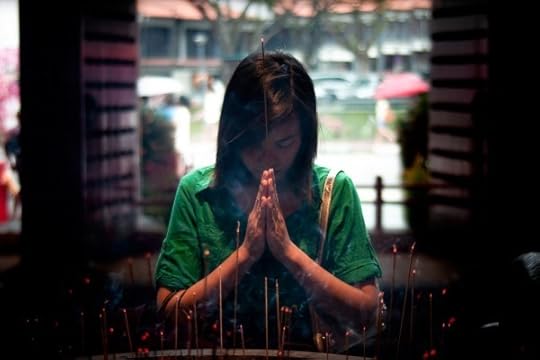
Photo: digitalpimp.
Ask, “Don’t you get sore sitting in one position for so long?”
Of course you do! The point of meditation is not to feel perfectly happy folded onto a zafu cushion…it’s to recognize when you feel stiff or sore and notice it before letting it go. Unpleasant situations arise in life all the time and you can’t do anything about them, so meditation is good practice for being able to deal with problems without freaking out and believing your legs are going to fall off.
Also, little-known fact, Buddha actually said there are four positions to meditate in, and each one should be practiced as much as the others: sitting, standing, walking, and lying down. So if you get sore from sitting…try walking for a change!
Assume the point of meditating is to reach Nirvana.
It turns out, Nirvana (or Nibbana, depending on which tradition you follow) is kind of a side effect — the real benefit of meditation is meditation itself. The concept of karma is often mistranslated as meaning, “If you do good stuff, you’ll get good stuff,” like some kind of cosmic reward cycle; what it really amounts to is, if you take good actions, as a consequence you will be a good person, which is a pretty great outcome (and vice versa: If you take negative actions, you will be a negative person, which is not so great).
Meditation is kind of like that. If you meditate a lot, you’ll be a person who meditates a lot. Which is the point.
Remind us of the five hindrances.
These five obstacles to successful meditation pop up for even the most advanced meditator. They are: sensory desire (wanting to see or hear something to distract yourself), ill-will (getting angry or having hateful thoughts about someone or something), sloth or torpor (sleepiness), restlessness or worry (the inability to calm the mind and focus), and doubt (believing this whole meditation thing is kind of pointless anyway).
Everybody gets these every now and then, and one of my meditation teachers was prone to what he called “multiple hindrance attacks,” where he would get all five at once! On the bright side, Buddha said the best solution to getting sleepy while meditating was to have a nap first, so you have official permission to snooze.
Ask us what our mantra is.
Not everyone who meditates has a mantra (a word or phrase that’s used to focus the mind, and is repeated) but for many who do, their mantra is private. It may have been given to them by a teacher, it might be one they picked themselves, but asking about it is kind of like asking someone exactly what they’re praying about. It’s sort of personal, you know?
Be a competitive meditator.
As Christopher Marlowe said, “Comparisons are odious.” Nobody wants to be in competition, especially about something as personal and noncompetitive as meditation. So prattling on about how many hours you sat, all the silent retreats you’ve been to or famous teachers you’ve studied with, and the number of times you’ve reached complete mindfulness are sure to make other people cranky.
It’s okay if you want to share your experience, but doing it so other people feel less good about their own practice is pretty unskillful behaviour.
Assume there’s only one way to sit.
There are lots of different ways to sit in meditation, if you enjoy sitting. You can sit in simple cross-legged position. Sometimes it’s helpful to sit on a cushion to elevate the hips. Other people use a kneeling bench that allows them to fold their legs under them. If sitting on the ground makes your knees hurt, you can sit in a chair or the edge of a bed.
You’re even allowed to change position while you meditate, provided you do it very mindfully (assuming your tradition allows that — Zen meditators, for example, often teach that you can’t shift at all for the duration of your zazen practice). There are as many ways to sit as there are personal preferences for sitting, so find one that works for you and stick with it!
State that if you can’t meditate for an hour, you might as well not meditate at all.
Even five minutes of meditation is better than nothing at all! One of my teachers told me that the whole point of meditation is to become more mindful of your daily activities. If you can only be mindful while sitting on a cushion, that isn’t particularly effective, because you don’t sit on a cushion that often. Instead, you’re grocery shopping, jogging, and brushing your teeth. So if you can do mindful grocery shopping and tooth-brushing meditation, he said, you’re doing it exactly right. 
The post How to piss off someone who meditates appeared first on Matador Network.

Matador Network's Blog
- Matador Network's profile
- 6 followers










